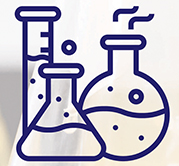The rising adoption of solar power as a renewable energy source and the increasing support from several governments toward sustainable development will drive the solar panel recycling market at a CAGR of 22% during the forecast period (2018–2023). The market value stood at $80.7 million in 2017, and it is expected to reach $269.8 million by 2023. Solar panels are made up of silicon, glass, synthetic materials, aluminum, and other metals, which can be separated through recycling after the completion of the lifecycle of panels. The recycled constituents can be reused in the production of other products.
The increasing focus of governments on sustainable development is one of the key growth drivers of the solar panel recycling market. Sustainable development is the controlled and optimized use of resources to preserve them for future generations. The rising sustainability concerns, owing to the energy crisis being witnessed by several nations, are accelerating the use of renewable solar power as an electricity source. The reuse of solar panels reduces the environmental impact of the waste generated by the disposal of these products.
According to P&S Intelligence, Europe held the largest share in the solar panel recycling market in 2017. Whereas, Asia-Pacific (APAC) is expected to demonstrate the fastest growth in the market during the forecast period. This can be attributed to the accelerating environment sustainability concerns and increasing government support being provided for the adoption of renewable energy sources and solar panel waste management in the region. Moreover, the cost advantage of solar panel recycling in India and China will also facilitate the market growth in APAC in the foreseeable future.
Thus, the rising installation of solar panels for energy generation and the soaring emphasis of governments on sustainable development will supplement the market growth in the foreseeable future.












